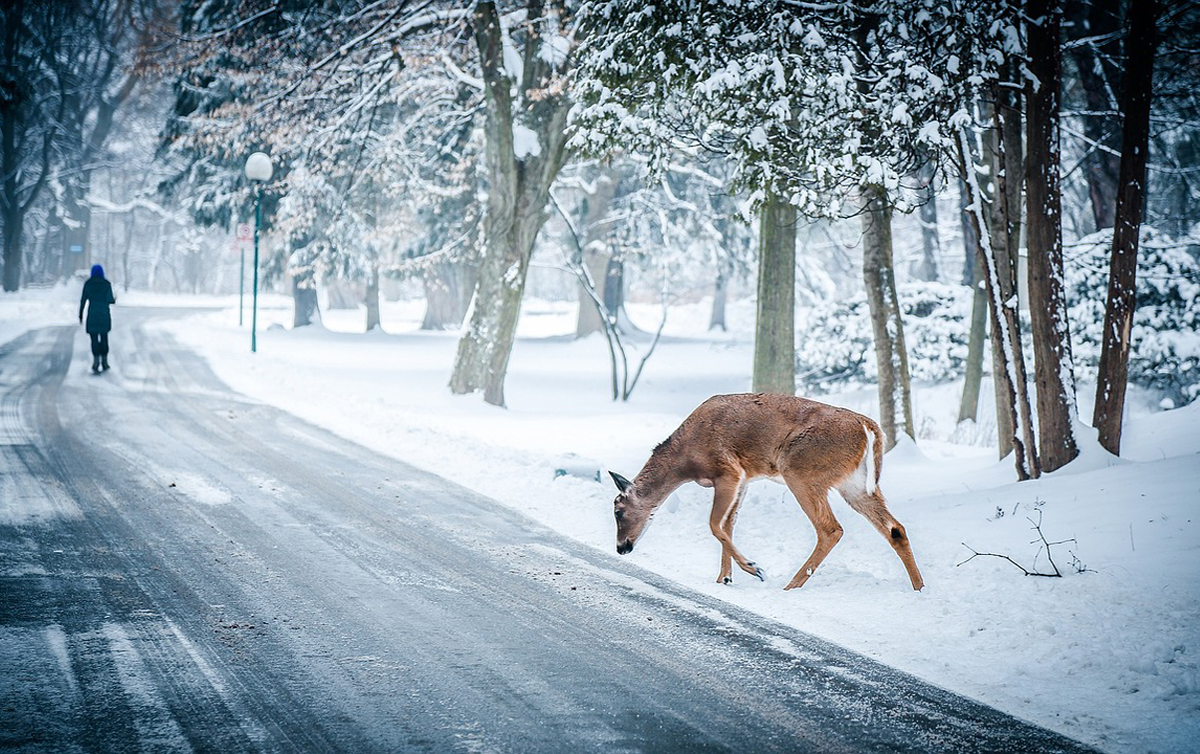
Tips to avoid deer collisions
By Faith Jolley
If you are like many people, you aren’t looking forward to “springing forward” and losing an hour of sleep on Sunday during the switch to daylight saving time. While the evenings will have more light, the mornings will be darker, which means a lot of Utahns will be commuting during lower-visibility hours.
During the winter, there is an increase in wildlife along the roadways, primarily due to big game animals migrating to lower elevations in search of food, according to Daniel Olson, wildlife migration initiative coordinator for the Utah Division of Wildlife Resources. The migration period for deer is typically April and May, and then again in November, which is when the highest number of vehicle and deer collisions occur, Olson said.
“The peak time to hit deer is around November,” Olson said. “It coincides with mating season and the migration. Animals are crossing more roads during the migration, and male deer move around a lot more to find mates.”
According to a DWR study, there were approximately 10,000 wildlife/vehicle collisions in 2012, Olson said. However, he estimates those numbers are lower now due to an increase in fencing and wildlife bridges that have been installed along migration routes across Utah highways.
Olson said deer are more active early in the morning and in the evenings, which coincides with busy commuting hours. This is also when low-light conditions make it difficult for drivers to see.
How to avoid deer collisions
—Be especially alert at dawn and dusk.
—Heed wildlife crossing signs. These signs are usually placed in areas known to have a high volume of deer collisions.
—Be alert on roadways near wooded, agricultural, and wetland areas and also near lakes and streams.
—Scan both sides of the road. Invite passengers to help watch for wildlife.
—Do not drive distracted. Put away food, phones, and other distractions.
—When possible, use high-beam headlights to illuminate the road.
—Look for an animal’s eyeshine, which can be seen from a distance. Slow down once you have spotted an animal near the roadside.
—Some animals travel in groups, so be sure to watch for additional animals if you see one.
—Do not throw trash out of your vehicle. Trash and food scraps can draw animals to roadways.
If you see an animal near the road, here are some additional suggestions:
—Do not swerve for a deer or small animals. Stay in your lane and slow down.
—If several animals are standing in the road, do not try to drive through them or get out of the vehicle to chase or herd them. Honk your horn and flash your lights to encourage them to move on.
—If an animal has crossed the road, continue to drive slowly, and be cautious because it may try to cross again.
What to do if you hit an animal
—Pull off the road and use your hazard lights if your car is too damaged to drive.
—Do not try to approach an injured animal.
—Call 911, or contact your local police department if you were injured or if the animal is in the roadway and could pose a threat to public safety.
For more information about deer collisions or deer migration, contact DWR wildlife migration initiative coordinator Daniel Olson at danielolson@utah.gov.
Faith Jolley is a Utah Division of Wildlife Resources public information officer.
Articles related to “Tips to avoid deer collisions”
Antler Gathering Ethics course required before gathering shed antlers



